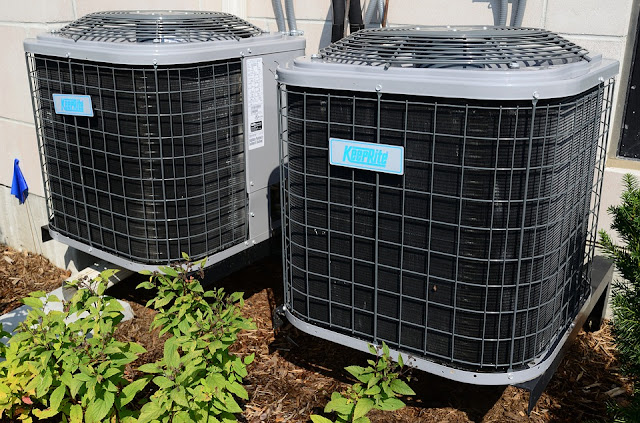1. Check The Air Filter
The first and most crucial step in HVAC maintenance is to check the air filter. A dirty air filter can restrict airflow, causing your system to work harder than it needs to. It not only decreases the efficiency of your system but can also lead to premature wear and tear. Check your air filter every month and replace it as needed.
If you have a disposable air filter, throw away the old one and install a new one. If you have a reusable air filter, wash it with soap and water, then let it dry completely before putting it back in place. It's also a good idea to check your furnace's blower motor while you're at it.
2. Schedule a Professional Tune-up
The best way to ensure your HVAC system is your shipping container home is to schedule a professional tune-up. A technician will inspect all the components of your system and make any necessary repairs or adjustments. It can help increase efficiency, reduce energy costs, and extend the life of your HVAC system.
If you have a home warranty, check if HVAC maintenance is included. This means if your HVAC is covered by a home warranty, they will cover the cost of a professional tune-up. Many warranties include annual maintenance visits as part of their coverage. Suppose you don't have a home warranty, no worries. You can still schedule a professional tune-up for your HVAC system. Most companies offer discounts on tune-ups if they're performed during the off-season. That means now is the perfect time to schedule your tune-up and get ahead of any potential problems.
3. Clean the Coils
The next step in HVAC maintenance is to clean the coils. The evaporator coil, located inside your air handler, absorbs heat from the indoor air. The condenser coil, located outside, releases that heat into the outdoor air. Over time, these coils can become covered in dust and dirt, which decreases their efficiency. If these coils become dirty, they will not do their job correctly, leading to higher energy bills and premature wear on your HVAC system. You should clean the condenser coils at least once a year, but more often if located in a dusty environment. To clean the coils, remove them from the unit and use a soft brush or vacuum attachment to remove any dirt or dust. After cleaning the coils, it's a good idea to check the fins. The fins on the coils can become bent, which can restrict airflow.
4. Check the Capacitor
The capacitor is a small, cylindrical device that stores electricity. It's responsible for starting and running your HVAC system. If the capacitor isn't working properly, your system will be unable to start or run correctly. To check the capacitor, remove the cover and use a multimeter to measure the voltage across the terminals. The reading should be between 350 and 440 volts. If it's not within that range, you'll need to replace the capacitor. If you're uncomfortable doing this yourself, don't worry. Most HVAC technicians offer free replacement services during regular maintenance visits.
5. Clean Your Outdoor Unit
The outdoor unit of your HVAC system in shipping container home is susceptible to dirt and debris. Over time, this can cause the unit to work harder than it needs to, leading to decreased efficiency and increased energy costs. To clean the outdoor unit, remove the cover and use a brush to sweep away any dirt or debris. Once it's clean, rinse it off with a hose and let it dry completely before putting it back in place. It's also essential to ensure enough space around the unit for air to circulate freely. You can install a fence or other obstruction to keep pests and debris out if there isn't.
6. Test the Thermostat
Your thermostat is the brain of your HVAC system. It is good to ensure it's working correctly. Start by testing the batteries to see if they need to be replaced. Then, set the thermostat to a temperature that you know is comfortable and see if the system turns on and off as it should. Look at the settings once you've confirmed your thermostat is working correctly. Spring is an excellent time to adjust the temperature settings for heating and cooling. You may also want to consider investing in a programmable thermostat, which can save you money by automatically adjusting the temperature when you're not home.
If you want to avoid costly repairs and extend the lifespan of your shipping container home HVAC system, then regular maintenance is vital. By following the tips above, you can keep your system running smoothly all spring and summer long. And if you ever have any questions or concerns, don't hesitate to contact a professional HVAC technician for assistance. They'll be happy to help you keep your HVAC system in top shape all year long.

